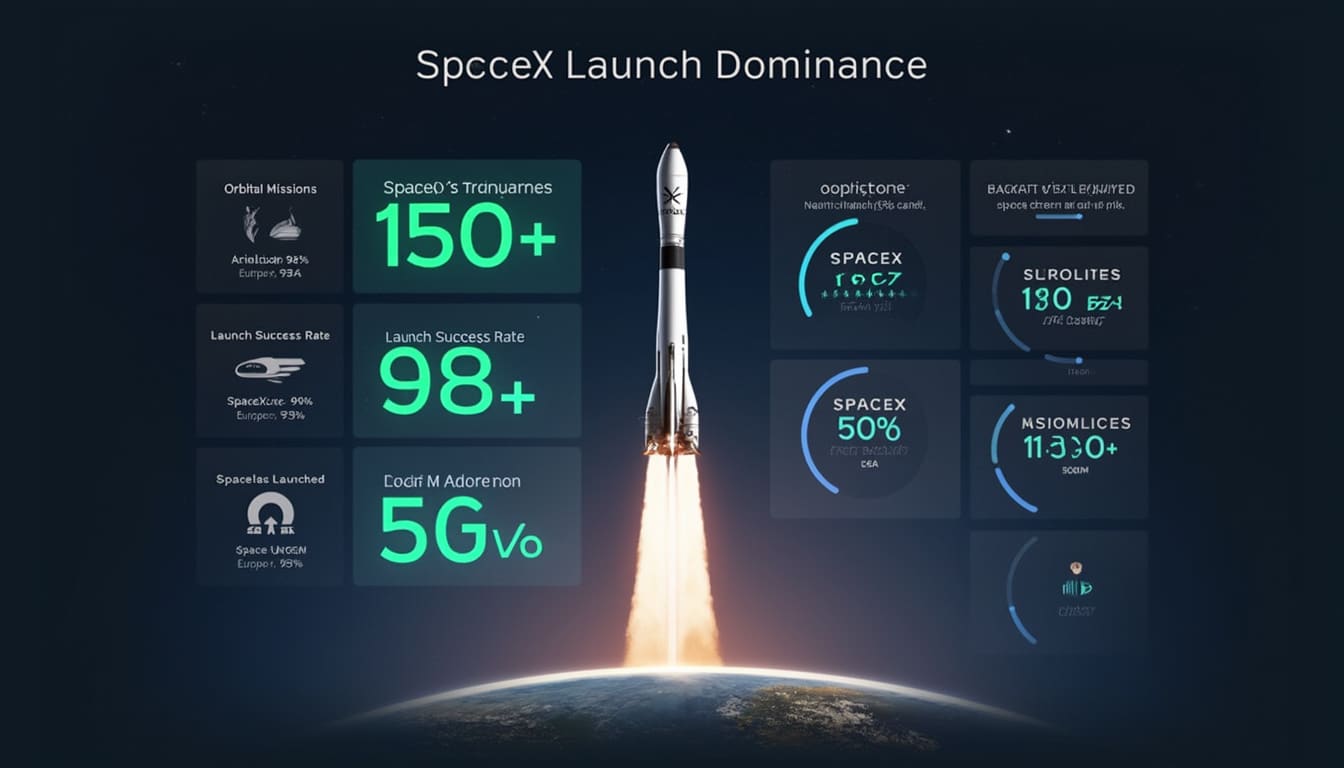The space race is heating up, and Europe finds itself at a crossroads. With the meteoric rise of SpaceX and its ambitious founder, Elon Musk, the European Space Agency and its partners have experienced a stark decline in their capacity to compete effectively in space exploration and satellite communications. This situation pales in comparison as SpaceX achieved an impressive 134 orbital missions last year, while Europe’s output was a meager three. As a consequence, Europe not only faces an urgent need to revitalize its space industry but also to question its current strategies and partnerships thoroughly.
From satellite communications to interplanetary exploration, SpaceX’s advancements push the boundaries of innovation. Furthermore, the company’s extensive constellation of over 7,000 satellites enables global broadband connectivity, a goal Europe aims to achieve by 2030 at an astronomical cost of $11 billion. As European nations contemplate their approach, particularly their relationship with SpaceX, critical questions about sovereign access to space and the future of domestic aerospace industry compatibility loom large. In this blog, we unravel the myriad challenges Europe faces in countering the dominance of SpaceX and explore viable paths forward.
The Rise of SpaceX and Its Implications for Europe

Understanding the Metrics of Success
SpaceX’s achievements are staggering when viewed against European figures. The significant disparity in launch frequencies showcases the shifting dynamics in the international aerospace industry. Success metrics in the form of orbital missions highlight a shift away from traditional European strategies. European space policy now grapples with a significant identity crisis, as collaboration with projects such as Arianespace proves increasingly fraught. Facing such profound challenges, the necessity of a cohesive response becomes all the more apparent.
However, competition isn’t simply about raw numbers. The expansive influence SpaceX wields over the space sector extends to technological innovation, satellite deployment, and cost efficiency. By mastering reusability and increasing launch cadence, SpaceX minimizes costs and maximizes accessibility to space, a critical factor driving their dominance. Notably, their business model diverges sharply from that of European partners who remain tethered to bureaucratic processes. Consequently, this brings to light a fundamental challenge: European nations must reassess their competitive strategies or risk continued obsolescence.
The Sovereignty Dilemma
European governments are acutely aware of their growing dependence on SpaceX. This evolving relationship raises concerns about sovereign access to space and communications. Europe’s commitment to a unified space strategy government and its burgeoning desire to maintain independent satellite networks leave officials struggling with the competing needs of innovation and self-reliance.
Conducting transactions with SpaceX undermines the European space industry, thereby limiting prospects for domestic companies to thrive. The growing body of evidence suggests that many European states are navigating a precarious balancing act, trying to benefit from commercial opportunities without ceding control over vital national interests. Documents like the Strategic Compass outline how critical space is in securing Europe’s political and economic future.
Airbus and the Inception of Project Bromo

Collaborating with Financial Giants
Faced with undeniable challenges, European aerospace titan Airbus has engaged Goldman Sachs to explore avenues for revitalizing the continent’s standing in the space sector. This collaboration aims to establish a new vertical within the aerospace industry capable of cooperating with innovative startups and larger partners alike, a mission designated as Project Bromo.
This ambitious effort garners attention for its potential to merge established companies and emerging players into one cohesive unit. But many critics question the viability of this approach, arguing that assembling a conglomerate merely emulates a “too big to fail” mentality. By tilting the European market landscape to favor certain players, this initiative risks alienating smaller enterprises and discouraging genuine competition.
Policy Implications and National Ambitions
The comprehensive framework of Project Bromo includes potential collaborations with companies like Thales and Leonardo S.p.A., emphasizing the necessity for an integrated approach to {space development}. However, the policy implications extend deeper, touching upon broader discussions around European ambitions regarding international space endeavors. While the goal is clear, the means of achieving it become increasingly contentious, as various stakeholders vie for influence within this arrangement.
Documentations such as the Strategic Compass lend insight into the complex interplay between economic resilience and physical security. As Europe endeavours to reaffirm its identity in the galaxy, national ambitions ought to align towards a common end: developing capabilities without forfeiting sovereignty.
Dissecting the Challenges and Roadblocks

Market Fragmentation and Operational Inefficiencies
The fragmented market within Europe presents significant operational hurdles contributing to inefficiency in responses to new challenges. These hurdles echo through the innovation framework, impacting the overall potential for harnessing collective expertise. Innovations must not only emerge from bureaucratic procedures but flow from streamlined collaborations among varied stakeholders.
Disorganized competitively leads to uncoordinated efforts and overlapping initiatives, as witnessed by the multitude of programs vying for funding and attention. Such fragmentation evidently hinders the establishment of a unified European innovation ecosystem capable of effectively contending with industry giants like SpaceX. By breaking down barriers and fostering a more cooperative environment, Europe can divine pathways toward innovation and service provision.
Strategic Collaborations for Future Success
While the current scenery presents challenges, turning the tide reflects upon instructions for emerging partnerships. Competitive markets necessitate agile and strategic collaborations that can adapt swiftly to technological advancements. In this vein, European nations must prioritize aligning interests among governments, public authorities, and private stakeholders to foster ecosystems in which innovation thrives.
Exploring alternative launch options like MaiaSpace, a subsidiary of ArianeGroup, reflects Europe’s commitment to a competitive edge through innovation in reusable rocket technology. Through collaboration across industries, Europe can establish a coherent space strategy that encompasses military applications while fortifying economic viability.
Conclusion: Looking Ahead to a Sustainable Space Future

The Importance of Cohesion in Strategy
Achieving a position of prominence on the global stage demands a cohesive approach. Addressing issues like market fragmentation, reliance on major private entities, and coordination across stakeholders will be pivotal for the long-term success of space exploration in Europe. The collaborative spirit will expedite the momentum necessary for Europe to innovate in ways that align its national ambitions with global goals in space.
Given the ongoing developments, it is critical for European nations to engage in dialogue about space policies that promote cooperative ventures. By investing thoughtfully in innovative technologies and fostering collaboration among industry players, Europe can lead the charge toward a new era of space exploration and redefine its role in the cosmos.
For those interested in the latest updates on the competition between SpaceX and European space strategies, be sure to follow key developments at sources like NewSpace Economy and the Politico, as they provide insights into the evolving landscape of space exploration.




Leave a Reply